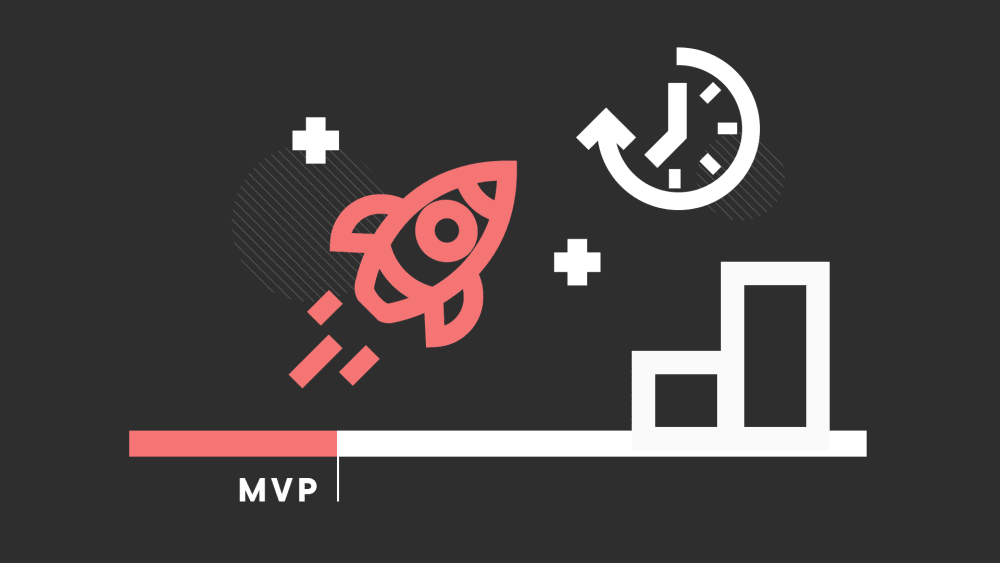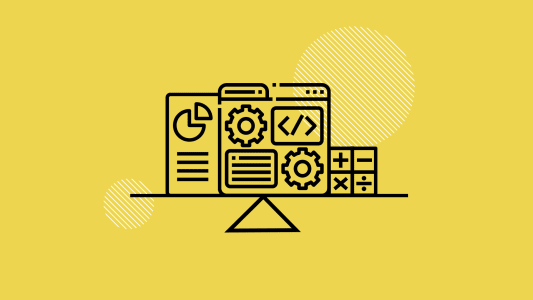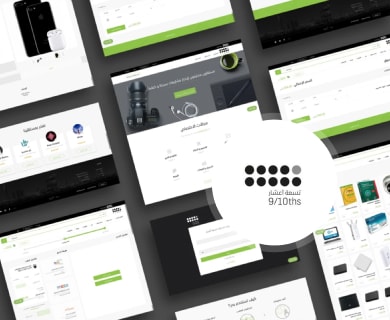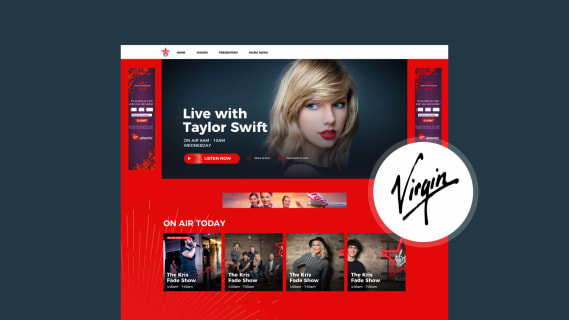How to build a Minimum Viable Product – a step by step guide
A minimum viable product, or MVP, is often the first usable version of a digital product. As a key element in the lean startup methodology, MVPs are an important and valuable part of the Boldare toolkit. In this article, we cover the MVP basics and delve into issues such as research, process and the importance of knowing why you’re building an MVP.

Table of contents
Any project to build a digital product begins with assumptions – lots of them. You have a great concept or product idea, and the chances are you have an idea in mind of who it will appeal to, how to reach them, what design features will be appreciated, even what technologies you are likely to use when you build it. Unless you check out each of these issues (and more) your project will be based on assumptions. That’s a high-risk strategy. Some of your assumptions will be wrong, but which ones?
Building an MVP is an efficient method of challenging and checking your project assumptions, allowing you to test the core elements of the product early and, by taking the resulting feedback into account, create a final product which has a much greater chance of success on the market. Before we answer the question how to build a Minimum Viable Product, let’s briefly talk about what is it.
What is an MVP?
An MVP is a basic, functional version of a digital product, usually containing only the essential features from the product concept. It is used to test the product concept with your target users, with the resulting data used to refine and focus the development process. An MVP is a tool that leads to a better, more suitable final product, helps you engage early with users, and reduces wasted time and resources during development.
The MVP concept comes from Eric Ries’ user-centered lean startup methodology and is defined as follows:
“… that version of a new product that allows a team to collect the maximum amount of validated learning about customers with the least effort.”
So, it may be a ‘lite’ version of the end product but the MVP’s aim is to gather useful information. That information should answer three key questions:
- Is there a need for the product?
- Does it solve the users’ problem?
- Is it likely to be profitable/sustainable?
(What is MVP? - Check out more in our previous article!)
How to develop an MVP - 5 steps
So, we know what an MVP is, but what is it for? What purpose does it serve in the development of your digital product?
Step 1: Know the purpose of your MVP
The MVP (or more accurately, the information it generates and gathers) is the firm foundation on which you build your final product. Without that foundation, we’re back to relying on our assumptions. Assumptions are very unreliable ground on which to build.
Put simply, an MVP is about achieving maximum possible certainty using the minimum possible investment of time and resources.
In addition to this overall purpose, MVPs also carry a number of wider benefits…
The Benefits of using MVPs
An MVP is a clear route to a better final product, one that fits the market and drives your (or your client’s) business goals. Before we go on, let’s summarize the other pluses of using MVPs as a stage in your digital product development.
- You focus on what’s important – An MVP only includes the must-have features, the things that will define the final product. At this early MVP stage in the process, the nice-to-have elements aren’t important – you need to know if your basic concept has a potential market waiting for it.
- You only spend what’s necessary – The minimal approach ensures you only invest in building and testing what’s necessary to prove the concept.
- You don’t waste time – An MVP can stop you spending time on development dead-ends and unwanted features.
- You talk to real (potential) users – By getting an early product version into the hands of interested people, you are not only getting feedback and input from the right people but also engaging with the early adopters in your future target market.
- You leverage investment – Potential investors like to see something tangible. What’s going to excite them more: a piece of paper with a business plan backed up with some PowerPoint slides, or a version of the eventual product that they can actually use?
Step 2: Do (just enough) research
With any new product, market research is essential. To quote Eric Ries on more time:
“What if we found ourselves building something that nobody wanted? In that case, what did it matter if we did it on time and on a budget?”
A recent CBInsights survey looked at why startups fail. Of the responses, 35% cited “no market need” for the product or service.
In digital product development, an MVP can be your most valuable piece of market research, enabling you to understand users’ actual need for the product, the uses they’ll put it to, who your potential competitors are, and so on. An MVP can give you a solid base from which to develop further.
What’s more, solid market research at the beginning of the project is a good foundation for later development stages – such as product-market fit and then scaling – when you’re looking to establish and grow the final product.
However, remember that research is seductive (there’s always another question to ask, another assumption to test) and it’s important not to get stuck – get the information you need and then build your MVP!
See also our MVP checklist!

Step 3: The must-have features – understanding your core product
If an MVP is a representation of the core elements of your product, you need clarity on what that core is. Out of all the features and aspects you could incorporate in the design, which are truly ‘must-have’?
Start by considering all the potential features in light of the following questions:
- What is the user problem that you’re trying to solve?
- Who exactly are the users that you’re building this product for?
- What are the benefits of that solution?
By doing so, you should be able to identify the hypotheses to be tested by the MVP, and that in turn will highlight the features that are (or at least, appear to be) absolutely critical and therefore worth testing.
One way to dig into these issues is to kick off the whole development process with a product discovery workshop. For us at Boldare, the product discovery workshop is almost indispensable. For a day or two, the project development team (inc. developers, business analysts, UX designers, scrum master, etc.) gets together with client and business partner to really explore and identify the core elements of the project (i.e. the key factors that will determine what the MVP looks like). The workshop is where we discuss target users, business goals, the drivers behind the product concept, the project risks, and begin to consider potential solutions and technologies. At this early stage, the idea of the MVP begins to take shape.
Step 4: Build the MVP (and do it ASAP)
Let’s be clear, every MVP is different and that means there is no one-size-fits-all process for building one. That said, it’s possible to begin with an outline, a kind of template for the process. At Boldare, our process usually starts with a clear product vision and then incorporates preliminary graphic design focused on UI/UX and architectural wireframing before the construction of the actual MVP.
However, the building of the MVP is really the practical beginning of the build-measure-learn cycle that lies at the heart of Ries’ lean startup approach. In brief…
…you have a hypothesis you want to test (that your product concept will solve a specific problem for a specific group of users), you build something that represents your product (the MVP!), user reactions and feedback is gathered and collated, the resulting data is analyzed and the insights and conclusions direct the next stage of development.
All that said, while the focus of this article is on MVPs, it’s worth emphasizing that the MVP is not the first opportunity to test your hypothesis (sometimes you can measure and learn before you build). There are numerous non-code ways to engage with potential users and gather useful feedback, including brochures, storyboards, videos, landing pages, packaging, a prototype, or even just written details of the value proposition you believe the product will offer.
Step 5: Time to learn (and keep learning)
After you’ve built the MVP and placed it in the hands of users, the next step is to learn from the experience and invest that learning in the next stage of development. Maybe you’ll just build one MVP, or maybe the learning from one MVP will result in a re-think, a pivot in the direction of the project, and you’ll repeat the MVP experience in order to test your revised hypothesis: another experiment.
Even if the response to your MVP is wholly positive, the learning isn’t over. The next step is to ensure the product-market fit of your creation, fine-tuning the product and its features to match the detailed needs of the market until you have a product that users want and will pay for (or otherwise access and use, depending on your business model).
Want to know more about this topic? Check out our articles about MVP.
Summary
The minimum viable product is likely to be an essential part of your digital product development process (prototypes can often be dispensed with, MVPs not so much). It’s the first tangible output and arguably provides the most influential feedback and data with regard to the final product version. However, it’s worth remembering that the MVP isn’t a product in any real sense of the word, it’s part of a learning process that leads to the product (it’s not uncommon for the final product to look very little like its predecessor MVP). Our philosophy at Boldare is to treat the MVP as an experiment in which we test the key product concepts with the identified user audience, using a core-value-proposition-wrapped-up-in-essential-features-only version of the product. Therefore, there is no obvious answer to the “how to develop MVP“ question. The MVP is where the theoretical/creative side of development meets and is tested by the real world. Check out the details of mvp development services in Boldare!

Share this article:










